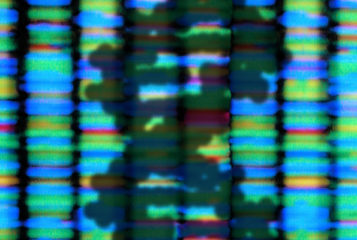Four rare gene mutations may protect against heart attacks by lowering levels of a type of fat called triglycerides, according to research in the New England Journal of Medicine.
Triglyceride levels in the blood were 39 percent lower in carriers of the mutations, which affect the APOC3 gene, than in non-carriers.
Researchers analysed blood from nearly 4,000 participants from the USA's National Heart, Lung and Blood Institute's Exome Sequencing Project. Around one in every 150 people carried an APOC3 mutation and were found to have a 40 percent reduced risk of heart attacks.
'Based on our findings, we predict that lowering triglycerides specifically through inhibition of APOC3 would have a beneficial effect by lowering disease risk', said Professor Alex Reiner, senior co-author of the study from the University of Washington.
Heart problems are known to be linked to levels of a type of cholesterol, low density lipoproteins (LDL). But the role of other blood lipids such as high density lipoproteins (HDL) and triglycerides in heart disease is less clear.
Dr Sekar Kathiresan, director of preventive cardiology at Massachusetts General Hospital, senior author of the study, said: 'HDL and triglycerides are both correlated with heart attack, and have an inverse relationship with one another — the lower the HDL the higher the triglycerides'.
'It has long been presumed that low HDL is the causal factor in heart disease and triglycerides are just along for the ride. But our genetic data indicate that the true causal factor may not be HDL after all, but triglycerides', he added.
Current heart disease prevention therapies such as statins target raised levels of LDL, the so-called 'bad cholesterol'. However some patients go on to have further heart attacks even after being treated with drugs to lower LDL. This study helps to explain the origins of this residual risk.
'Although statins remain a powerful arrow in the quiver, the notion of residual risk of coronary heart disease continues to be a significant clinical problem', commented Dr Kathiresan. 'Our study really reinvigorates the idea of lowering triglycerides and specifically by blocking APOC3 as a viable therapeutic strategy for addressing residual risk'.
Sources and References
-
Loss-of-Function Mutations in APOC3 , Triglycerides, and Coronary Disease
-
Broken gene found to protect against heart disease
-
Crippled Gene Lowers Triglycerides, Wards Off Heart Disease
-
Rare gene mutation linked to lower heart attack risk
-
Mutations That Prevent Heart Attacks Upend The Search For New Drugs





Leave a Reply
You must be logged in to post a comment.